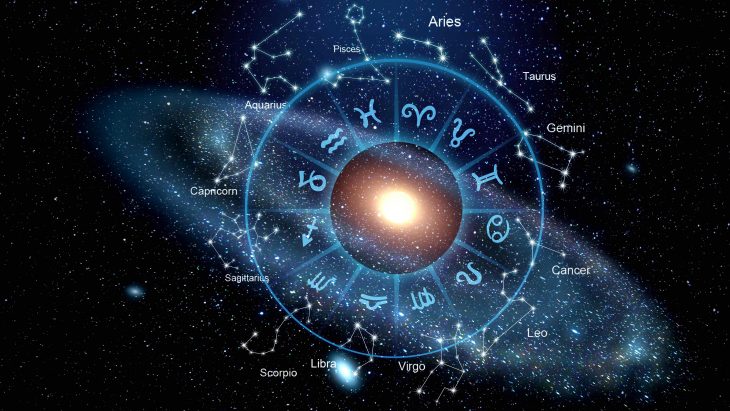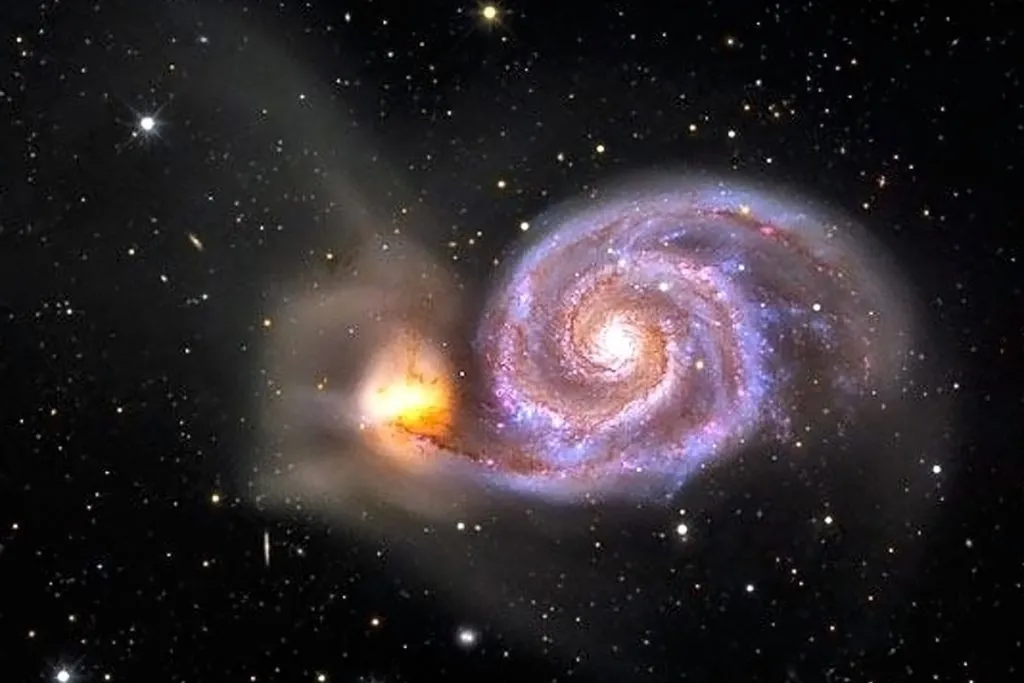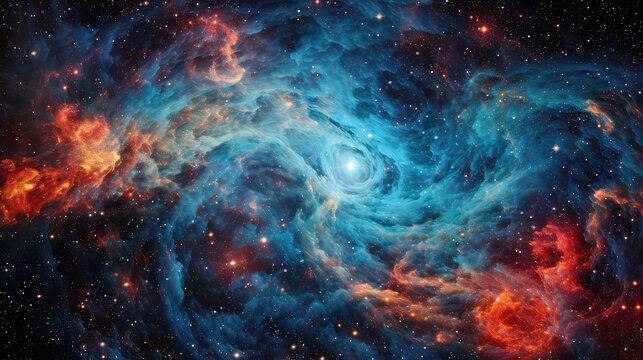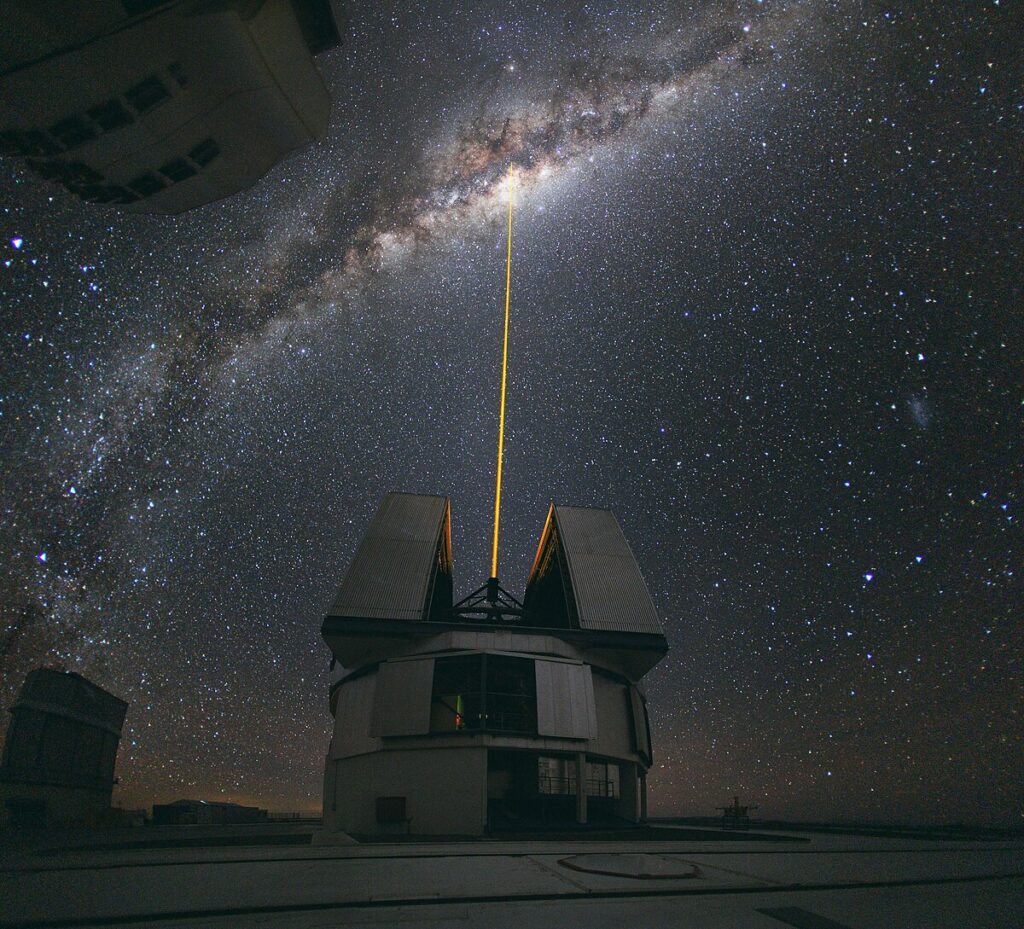The four types of astronomy are astrophysics, astrometry, astrogeology, and astrobiology. Astrophysics uses physics laws to study stars and celestial bodies. Astrometry maps the positions and movements of celestial bodies. Astrogeology explores the geology of planets, moons, and asteroids. Astrobiology searches for life beyond Earth and studies the conditions that support it.
Both astronomy and cosmology are vital for figuring out the universe. They help us understand everything from how things move in space to what other planets might be like, and even if there might be life out there.
Together, these types of astronomy help us unlock the mysteries of the cosmos and appreciate the vastness of space.
1. Astrophysics

Astrophysics is a branch of astronomy that focuses on applying the principles of physics to understand the properties, behavior, and evolution of celestial bodies and the universe as a whole.
It seeks to uncover the underlying physical processes that govern the cosmos, from the smallest particles to the largest structures.
Astrophysics applies various principles of physics to study celestial bodies in different ways
Mechanics
Astrophysics uses Newtonian mechanics and Einstein’s theory of general relativity to understand the motion and gravitational interactions of celestial objects. This helps in studying the orbits of planets, moons, and comets, as well as the dynamics of galaxies and galaxy clusters.
Electromagnetism
By studying the electromagnetic radiation emitted by celestial bodies, astrophysicists can determine their properties and composition. Different types of radiation, such as visible light, radio waves, X-rays, and gamma rays, provide valuable information about stars, galaxies, and other cosmic objects.
Thermodynamics
Astrophysics applies thermodynamic principles to study the processes that occur within stars, such as nuclear fusion, stellar evolution, and the production of energy. It also investigates the behavior of interstellar gas and dust clouds, which play a crucial role in the formation of stars and galaxies.
Quantum Mechanics
In extreme environments like neutron stars and black holes, astrophysics relies on quantum mechanics to understand the behavior of matter and energy. This helps in explaining phenomena such as the emission of radiation from black holes and the formation of exotic states of matter.
Nuclear Physics
Astrophysics explores nuclear reactions that occur within stars, which are responsible for producing the elements that make up the universe. By studying the abundances of different elements in stars and galaxies, astrophysicists can infer their ages, histories, and formation processes.
2. Astrometry

Astrometry is a part of astronomy that’s all about figuring out exactly where things are in space, how they’re moving, and how far away they are. It helps us make detailed maps of everything in the sky, like stars, galaxies, planets, and even asteroids.
Astrometry’s goal is to create precise reference points and coordinates for objects in space. This helps astronomers keep track of how things move over time and understand how they’re spread out and moving around in the universe.
Purpose of Astrometry in Astronomy
The primary purpose of astrometry in astronomy is to provide precise and reliable positional data for celestial objects. This data serves as the foundation for various areas of astronomical research and exploration
Astrometry contributes to navigation systems and timekeeping by providing accurate reference points in the sky for spacecraft, satellites, and terrestrial observatories.
It helps astronomers study the motions of stars within our galaxy and beyond, providing insights into the structure, dynamics, and evolution of the Milky Way and other galaxies.
Furthermore, it plays a key role in detecting exoplanets by measuring the tiny wobbles or “astrometric reflex motion” induced in the parent star due to the gravitational pull of the orbiting planet.
Moreover, Astrometry enables astronomers to determine the distances to nearby stars and other celestial objects through the technique of parallax, which helps in understanding the scale and structure of the universe.
Also it helps scientists study the distribution of mass within galaxies, the dynamics of galactic clusters, and the gravitational interactions between celestial bodies.
3. Astrogeology

Astrogeology is a specialized field within planetary science that focuses on studying the geological features, processes, and history of celestial bodies such as planets, moons, asteroids, meteorites, and comets.
It combines principles from geology, astronomy, and planetary science to unravel the mysteries of the rocky terrain found throughout the solar system and beyond.
Astrogeologists seek to understand the formation, composition, and evolution of planetary surfaces, as well as the geological processes that have shaped them over time. By examining surface features, analyzing rock samples, and interpreting geological data obtained from spacecraft missions and telescopic observations, astrogeologists gain insights into the geological history and environmental conditions of celestial bodies.
Focus on Studying the Geology of Celestial Bodies
Astrogeology places a strong emphasis on studying the geological characteristics of celestial bodies, including their surface morphology, mineral composition, and geological formations.
By applying principles of geology to planetary surfaces, astrogeologists aim to understand the processes that have shaped these bodies and the geological forces that continue to operate on them.
Astrogeologists investigate a wide range of geological features and processes, including impact cratering, volcanism, tectonics, erosion, sedimentation, and surface weathering. They use geological principles and techniques, such as stratigraphy, structural geology, petrology, and geomorphology, to interpret the surface geology of celestial bodies and reconstruct their geological histories.
4. Astrobiology

Astrobiology is like a big team of scientists exploring life beyond Earth. They want to know where life came from, how it changes over time, and where else it might exist in the universe.
They look at all sorts of things, like whether other planets or moons could be comfy for life, if there might be tiny bugs or even smart aliens out there, and how we can tell if there’s life on other planets by spotting special signs.
To answer these questions, astrobiologists mix together ideas from biology, astronomy, chemistry, geology, and planetary science. They study everything from the conditions needed for life to the chances of finding it in our solar system or far beyond.
Purpose of Astrobiology in Astronomy
The primary purpose of astrobiology in astronomy is to explore the possibility of life beyond Earth and to understand the conditions that could support life elsewhere in the universe.
Astrobiologists dig into whether other planets and moons could be places where life could survive. This helps them tackle huge questions, like whether there are other living beings out there and if we’re the only ones in the whole universe.
Astrobiology isn’t just about finding aliens—it’s also key to learning how planets form, how their air changes over time, where important molecules come from, and how life might kick off and survive in tough places.
Astrobiologists look at all the different life forms on Earth and where they can live. Then, they use that info to guess where else in space life might be able to hang out.
Final thoughts
Astronomy covers a bunch of cool areas, each looking at different parts of space. We talked about four main ones: astrophysics, which uses physics to understand stars and stuff; astrometry, which maps where things are in space; astrogeology, which checks out rocks in space; and astrobiology, which hunts for aliens.
By studying all these parts, scientists get to know the universe better, from how stars work to whether there might be life out there. Astronomy keeps us curious and wanting to learn more about space and where we fit in.
